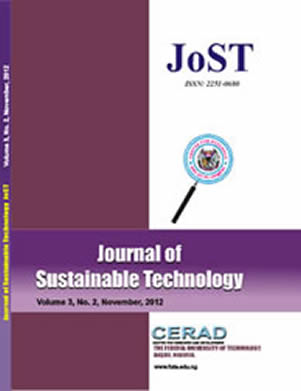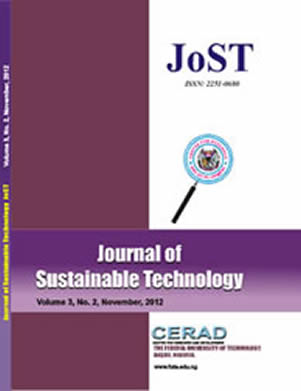Susceptibility of Type 316L austenitic stainless steel welded joints to localized pitting
corrosion in alkaline solutions (sodium hydroxide [NaOH] and potassium hydroxide [KOH]) has
been investigated in this paper. The study compared the pitting resistance of welded joints (produced
by Shielded Metal Arc Welding [SMAW] and Metal Inert Gas welding [MIG]) in high temperature
(125oC) NaOH and KOH solutions with causticity of 50%. All the studies were by immersion
method. The weldments (Base Metal [BM], Weld Metal [WM] and Heat Affected Zone [HAZ]) of both
SMAW and MIG manifested low corrosion resistance potentials in both environments. The nearhigh
power density of MIG process succeeded in creating a narrow HAZ, however pitting corrosion
occurred in the HAZ thus confirming the depletion of Cr. This sensitization-induced Cr depletion
leads to grain boundary segregations and concentration modifications at the grain boundaries. Mo
and Cr elements dissolution was established and the dissolution mechanism is explained by
comparative “weak bond energy” of these elements with the other elements in the matrix. The depth
of de-alloying or internal penetration varied from surface roughening, cracks and intergranular
attack. Since the stainless steels resistance to corrosion in hot alkali becomes unstable at
approximately 93oC, it is very likely that de-alloying commences at lower temperature. This negatively
shifted the pitting potential of the welded joints of both weld processes. The high temperature is
responsible for Caustic Stress Corrosion Cracking (CSCC) observed.
Key words: 316L Stainless steel, high temperature alkaline, SMAW, MIG, intergranular corrosion,
pitting corrosion.
PAPER TITLE :LOCALISED CORROSION SUSCEPTIBILITY OF AISI 316L STAINLESS STEEL WELDED JOINTS IN HIGH TEMPERATURE ALKALINE ENVIRONMENTS
JOURNAL Of SUSTAINABLE TECHNOLOGY | VOLUME 4 NUMBER 2 2013
Paper Details
- Author(s) : IWUOHA, A.U.1*, SWIFT, O.N.K.2 and OWUAMA, K.C.2
- Abstract:



